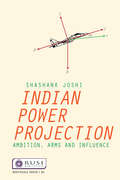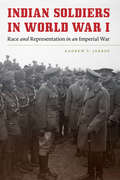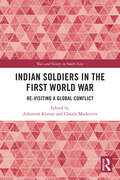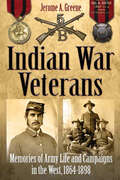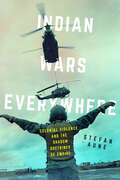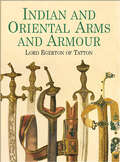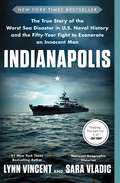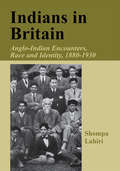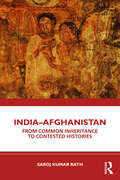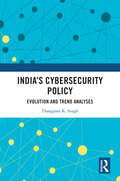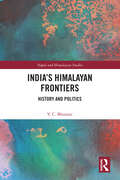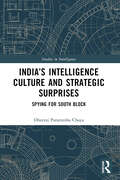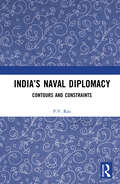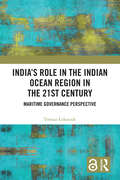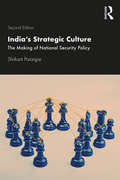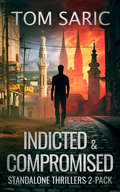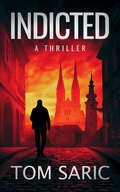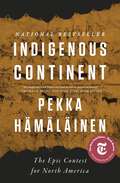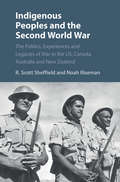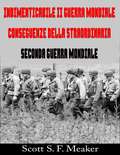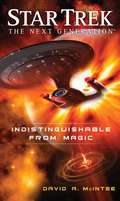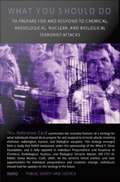- Table View
- List View
Indian Power Projection: Ambition, Arms and Influence (Whitehall Papers)
by Shashank JoshiIndia is growing into one of Asia’s most important military powers. Its defence budget has more than doubled in the past decade, and it imports more arms than anyone else in the world. But India is still seen as a land power focused on long, disputed and militarised borders with Pakistan and China rather than the global military force it was in the first half of the twentieth century under British rule. Is this changing? India is acquiring increasing numbers of key platforms – aircraft carriers, amphibious ships, refuelling tankers and transport aircraft – that are extending its reach to the Indian Ocean littoral and beyond. But most accounts of this build-up have been impressionistic and partial. Indian Power Projection assesses the strength, reach and purposes of India's maturing capabilities. It offers a systematic assessment of India’s ability to conduct long-range airstrikes from land and sea, transport and convey airborne and amphibious forces, and develop the institutional and material enablers that turn platforms into capabilities. It draws extensively on the lessons of modern expeditionary operations, and considers how India’s growing interests might shape where and how it uses these evolving capabilities in the future. This study finds that Indian power projection is in a nascent stage: limited in number, primarily of use against much-weaker adversaries, and deficient in some key supporting capabilities. India’s defence posture will continue to be shaped by local threats, rather than distant interests. Indian leaders remain uncomfortable with talk of military intervention and expeditionary warfare, associating these with colonial and superpower excess. But as the country’s power, interests and capabilities all grow, it is likely that India will once more find itself using military force beyond its land borders.
Indian Soldiers in World War I: Race and Representation in an Imperial War (Studies in War, Society, and the Military)
by Andrew T. JarboeThird place in the 2022 SAHR Templer Best First Book Prize More than one million Indian soldiers were deployed during World War I, serving in the Indian Army as part of Britain&’s imperial war effort. These men fought in France and Belgium, Egypt and East Africa, and Gallipoli, Palestine, and Mesopotamia. In Indian Soldiers in World War I Andrew T. Jarboe follows these Indian soldiers—or sepoys—across the battlefields, examining the contested representations British and Indian audiences drew from the soldiers&’ wartime experiences and the impacts these representations had on the British Empire&’s racial politics. Presenting overlooked or forgotten connections, Jarboe argues that Indian soldiers&’ presence on battlefields across three continents contributed decisively to the British Empire&’s final victory in the war. While the war and Indian soldiers&’ involvement led to a hardening of the British Empire&’s prewar racist ideologies and governing policies, the battlefield contributions of Indian soldiers fueled Indian national aspirations and calls for racial equality. When Indian soldiers participated in the brutal suppression of anti-government demonstrations in India at war&’s end, they set the stage for the eventual end of British rule in South Asia.
Indian Soldiers in the First World War: Re-visiting a Global Conflict (War and Society in South Asia)
by Ashutosh Kumar and Claude MarkovitsThis book explores the lives and social histories of Indians soldiers who fought in the First World War. It focuses on their motivations, experiences, and lives after returning from service in Europe, Mesopotamia, East Africa, and Palestine, to present a more complete picture of Indian participation in the war. The book looks at the Indian support to the war for political concessions from the British government and its repercussions through the perspective of the role played by more than one million Indian soldiers and labourers. It examines the social and cultural aspects of the experience of fighting on foreign soil in a deadly battle and their contributions which remain largely unrecognised. From micro-histories of fighting soldiers, aspects of recruitment and deployment, to macro-histories connecting different aspects of the War, the volume explores a variety of themes including: the material incentives, coercion and training which converted peasants into combatants; encounters of travelling Indian soldiers with other societies; and the contributions of returned soldiers in Indian society. The book will be useful to researchers and students of history, post-colonial studies, sociology, literature, and cultural studies as well as for those interested in military history, World War I, and colonial history.
Indian War Veterans: Memories of Army Life and Campaigns in the West, 1864–1898
by Jerome A. GreeneThe decades-long military campaign for the American West is an endlessly fascinating topic, and award-winning author Jerome A. Greene adds substantially to this genre with Indian War Veterans: Memories of Army Life and Campaigns in the West, 1864-1898. Greene’s study presents the first comprehensive collection of veteran (primarily former enlisted soldiers’) reminiscences. The vast majority of these writings have never before seen wide circulation. Indian War Veterans addresses soldiers’ experiences throughout the area of the trans-Mississippi West. As readers will quickly discover, the depth and breadth of coverage is truly monumental. Topics include recollections of fighting with Custer and the mutilation of the dead at Little Bighorn, the Fetterman fight, the Yellowstone Expedition of 1873, battles at Powder River and Rosebud Creek, fighting Crazy Horse at Wolf Mountains, Geronimo and the Apache wars, the Ute and Modoc wars, Wounded Knee, and much more. The remembrances also include selections as diverse as “Christmas at Fort Robinson,” “Service with the Eighteenth Kansas Volunteer Cavalry,” and “Chasing the Apache Kid.” These carefully drawn recollections derive from a wide array of sources, including manuscript and private collections, veterans’ scrapbooks, obscure newspapers, and private veterans’ statements. A special introductory essay about Indian war veterans contains new material about their post-service organizations all the way into the 1960s. Complimenting the riveting entries are dozens of previously unpublished photographs. Readers will additionally find a gallery of never-before-seen full-color plates displaying a wide variety of Indian War Veterans’ badges, medals, and associated materials. No other book discusses the post-army lives of these men or presents their recollections of army life as thoroughly as Greene’s Indian War Veterans. This groundbreaking study will appeal to lay readers, historians, site visitors and interpreters, Civil War and Indian wars enthusiasts, collectors, museum curators, and archeologists. "A treasure-trove of original sources on the Indian wars, an essential addition to every library on the subject." --Paul A. Hutton, University of New Mexico, and the author of "Phil Sheridan and his Army and "The Custer Reader." About the Author: Jerome A. Greene is an award-winning author and historian with the National Park Service. His books include The Guns of Independence: The Siege of Yorktown, 1781, Lakota and Cheyenne: Indian Views of the Great Sioux War, 1876-1877, Morning Star Dawn: The Powder River Expedition and the Northern Cheyenne, 1876, and Washita: The U.S. Army and the Southern Cheyennes, 1867-1869. He resides in Colorado.
Indian Wars Everywhere: Colonial Violence and the Shadow Doctrines of Empire (American Crossroads #71)
by Stefan AuneReferences to the Indian Wars, those conflicts that accompanied US continental expansion, suffuse American military history. From Black Hawk helicopters to the exclamation "Geronimo" used by paratroopers jumping from airplanes, words and images referring to Indians have been indelibly linked with warfare. In Indian Wars Everywhere, Stefan Aune shows how these resonances signal a deeper history, one in which the Indian Wars function as a shadow doctrine that influences US military violence. The United States’ formative acts of colonial violence persist in the actions, imaginations, and stories that have facilitated the spread of American empire, from the "savage wars" of the nineteenth century to the counterinsurgencies of the Global War on Terror. Ranging across centuries and continents, Indian Wars Everywhere considers what it means for the conquest of Native peoples to be deemed a success that can be used as a blueprint for modern warfare.
Indian and Oriental Arms and Armour (Dover Military History, Weapons, Armor)
by Lord Egerton of TattonOriginally created in the late 19th century to catalog Indian and Oriental arms and armor for a British museum, this volume has long since become a sourcebook of vital information on the military history of India. Enhanced with excellent illustrations, it remains one of the few books available on the subject, providing factual accounts of events ranging from the earliest invasions of the subcontinent in 200 B.C. to the decline of the Mogul Empire (early 18th century) and the First Burmese War in 1824. In addition to information on military history, succeeding chapters describe Indian swords, helmets, knives, shields, daggers, spears, javelins, blowpipes, sabers, and a host of other weapons, including arms used for athletic and sacrificial purposes. Descriptive notes, grouped according to geographical areas, comment on styles of decoration, manufacturing processes, and ethnological characteristics. A shorter section of the book includes detailed information on Arab and Persian arms (maces, battle axes, matchlock guns, bows and arrows, etc.) and Japanese armor. Students of Far Eastern arms and armor as well as enthusiasts of military history will welcome this comprehensive reference. 350 halftones and line illustrations. 350 halftones and line illustrations.
Indianapolis: The True Story of the Worst Sea Disaster in U.S. Naval History and the Fifty-Year Fight to Exonerate an Innocent Man
by Lynn Vincent Sara Vladic<P><P>Just after midnight on July 30, 1945, days after delivering the components of the atomic bomb from California to the Pacific Islands in the most highly classified naval mission of the war, USS Indianapolis is sailing alone in the center of the Philippine Sea when she is struck by two Japanese torpedoes. The ship is instantly transformed into a fiery cauldron and sinks within minutes. <P><P>Some 300 men go down with the ship. Nearly 900 make it into the water alive. For the next five nights and four days, almost three hundred miles from the nearest land, the men battle injuries, sharks, dehydration, insanity, and eventually each other. Only 316 will survive. For the better part of a century, the story of USS Indianapolis has been understood as a sinking tale. <P><P>The reality, however, is far more complicated—and compelling. Now, for the first time, thanks to a decade of original research and interviews with 107 survivors and eyewitnesses, Lynn Vincent and Sara Vladic tell the complete story of the ship, her crew, and their final mission to save one of their own. It begins in 1932, when Indianapolis is christened and launched as the ship of state for President Franklin Roosevelt. After Pearl Harbor, Indianapolis leads the charge to the Pacific Islands, notching an unbroken string of victories in an uncharted theater of war. <P><P>Then, under orders from President Harry Truman, the ship takes aboard a superspy and embarks on her final world-changing mission: delivering the core of the atomic bomb to the Pacific for the strike on Hiroshima. <P><P>Vincent and Vladic provide a visceral, moment-by-moment account of the disaster that unfolds days later after the Japanese torpedo attack, from the chaos on board the sinking ship to the first moments of shock as the crew plunge into the remote waters of the Philippine Sea, to the long days and nights during which terror and hunger morph into delusion and desperation, and the men must band together to survive. <P><P>Then, for the first time, the authors go beyond the men’s rescue to chronicle Indianapolis’s extraordinary final mission: the survivors’ fifty-year fight for justice on behalf of their skipper, Captain Charles McVay III, who is wrongly court-martialed for the sinking. <P><P>What follows is a captivating courtroom drama that weaves through generations of American presidents, from Harry Truman to George W. Bush, and forever entwines the lives of three captains—McVay, whose life and career are never the same after the scandal; Mochitsura Hashimoto, the Japanese sub commander who sinks Indianapolis but later joins the battle to exonerate McVay; and William Toti, the captain of the modern-day submarine Indianapolis, who helps the survivors fight to vindicate their captain. <P><P> A sweeping saga of survival, sacrifice, justice, and love, Indianapolis stands as both groundbreaking naval history and spellbinding narrative—and brings the ship and her heroic crew back to full, vivid, unforgettable life. It is the definitive account of one of the most remarkable episodes in American history. <P><b>A New York Times Bestseller</b>
Indians in Britain: Anglo-Indian Encounters, Race and Identity, 1880-1930
by Shompa LahiriThis is an analysis of the nature and impact of the Indian presence in Britain, and British reactions to it. Problems of discrimination, isolation, and deprivation turned many students to politics, they appropriated ideas and institutions, and challenged British metropolitan society.
India–Afghanistan: From Common Inheritance to Contested Histories
by Saroj Kumar RathThis book is a searing history of Indo-Afghan relations. It looks at how Afghanistan, once the heartland of India, has now been reduced to a troubled cousin in the contemporary era. Drawing on archival records, as well as ancient Greek, Sanskrit, Chinese, and Persian literature, the book traces the history of Afghanistan from ancient times up to the recent Taliban takeover of the country in 2020. It presents an analytical history of race, culture, and belonging in a world shaken and transformed by colonization. The author provides a new interpretation of the region and discusses South Asia’s courteous racial etiquette.An indispensable read, the book will be useful for students and researchers of history, Middle East and Central Asian studies, international relations, politics, development studies, and Asian studies.
India’s Cybersecurity Policy: Evolution and Trend Analyses
by Thangjam K. SinghThis book examines India’s public policies on cybersecurity and their evolution over the past few decades. It shows how threats and vulnerabilities in the domain have forced nation-states to introduce new policies to protect digital ecosystems. It charts the process of securitisation of cyberspace by the international system from the end of the 20th century to the present day. It also explores how the domain has become of strategic interest for many states and the international bodies which eventually developed norms and policies to secure the domain.Consequently, the book discusses the evolution of cybersecurity policy at global level by great powers, middle powers, and states of concern and compares them with the Indian context. It also highlights the requirement of introducing/improving new cybersecurity guidelines to efficiently deal with emerging technologies such as 5G, Artificial Intelligence (AI), Big Data (BD), Blockchain, Internet of Things (IoT), and cryptocurrency.The book will be of great interest to scholars and researchers of cybersecurity, public policy, politics, and South Asian studies.
India’s Defence Economy: Planning, Budgeting, Industry and Procurement
by Laxman Kumar BeheraAs the fourth largest military spender in the world, India has a huge defence economy supported by a budget amounting to nearly $67 billion in 2020–21. This book examines how well India’s defence economy is managed, through a detailed statistical exposition of five key themes – defence planning, expenditure, arms production, procurement and offsets. This book is based on hard-core evidence collected from multiple government and other credible sources including the ministries of Defence, Finance, and Commerce and Industry, Comptroller and Auditor General of India and the Reserve Bank of India. It discusses key issues such as the evolution of India’s defence plan; the feasibility of increasing defence spending; India’s defence acquisition system; and the recent reform measures taken under the rubric of the ‘Make in India’ initiative. Well supplemented with original tables and figures, India’s Defence Economy will be indispensable to students and researchers of defence and security studies, politics and international relations, finance, development studies, economics, strategic studies, South Asian politics, foreign policy and peace studies. It will also be of interest to defence ministry officials, senior armed forces personnel, military attachés, defence training institutes and strategic think tanks.
India’s Himalayan Frontiers: History and Politics (Nepal and Himalayan Studies)
by Viney C. BhutaniThis book looks at the historical and political dynamics of the Sino-Indian border dispute in India’s Himalayan Frontiers. Going back into Tibetan history, the author examines the making of the McMahon Line at Simla Conference of 1913–14. It also takes a look at some of the neighbouring areas that had interaction with Tibet, as well as the border areas of Assam and Burma, both of which were British Indian provinces. By using new archival materials, this study further goes to consider the events during the years following the defining of the McMahon Line, which, verily, did not have a sound juridical basis even if it has been regarded by scholars as a suitable boundary. It further explores different aspects of the northern frontiers of India and Sino-Indian border dispute and relations. This volume will interest scholars and researchers of history, political science and area studies, especially those interested in the geopolitics of India, China and the Himalayan region.
India’s Intelligence Culture and Strategic Surprises: Spying for South Block (Studies in Intelligence)
by Dheeraj Paramesha ChayaThis book examines India’s foreign intelligence culture and strategic surprises in the 20th century. The work looks at whether there is a distinct way in which India ‘thinks about’ and ‘does’ intelligence, and, by extension, whether this affects the prospects of it being surprised. Drawing on a combination of archival data, secondary source information and interviews with members of the Indian security and intelligence community, the book provides a comprehensive analysis of the evolution of Indian intelligence culture from the ancient period to colonial times and, subsequently, the post-colonial era. This evolutionary culture has played a significant role in explaining the India’s foreign intelligence failure during the occurrences of strategic surprises, such as the 1962 Sino-Indian War and the 1999 Kargil War, while it successfully prepared for surprise attacks like Operation Chenghiz Khan by Pakistan in 1971. The result is that the book argues that the strategic culture of a nation and its interplay with intelligence organisations and operations is important to understanding the conditions for intelligence failures and strategic surprises. This book will be of much interest to students of intelligence studies, strategic studies, Asian politics and International Relations.
India’s Naval Diplomacy: Contours and Constraints
by P.V. RaoThis book studies India’s evolving naval engagements with other nations of the Indian Ocean region. It traces the growth of the Indian Navy and discusses its role as an instrument of meeting national objectives, particularly for furthering foreign policy. The volume analyses themes such as Indian Navy’s (IN) transition from a brown water to blue water force, Indian maritime debates and doctrines, naval ‘bridge-building’ missions, and Sino-Indian maritime competitions. It examines Indian Navy’s regional roles within the broader framework of its diplomatic objectives in particular regions and looks at how keen regional states are to accept India as a crisis manager and would allow it to build a regional maritime security architecture. The author also discusses state control over naval diplomatic roles and investigates if Indian Navy can effectively hedge extra-regional, mainly Chinese, involvement in the Indian Ocean. An important study of India’s naval prowess, this book will be indispensable to students and researchers of political science, international relations, maritime and naval studies, strategic studies, geopolitics, defence studies, conflict studies, diplomacy, Indian Ocean studies, South Asian studies and those interested in India-China maritime rivalry.
India’s Role in the Indian Ocean Region in the 21st Century: Maritime Governance Perspective
by Tomasz ŁukaszukThe book explores India’s role as a normative power, with solid credentials based on a long history of thalassic experience of states of South India. It examines how India has been interpreting international law and rules for the exploitation of living and non-living resources in her way.The book presents an analysis of India’s activities in four key areas of maritime governance and a description of its roles in the Indian Ocean Region. It highlights India as a maritime security and sustainable maritime development model alternative to the Chinese. The volume also showcases a holistic, interdisciplinary picture of India’s maritime policy and thoroughly explains its historical and semiotic background. Further, it discusses India’s endeavours as a new version of the ASEAN+ cooperation model combined with the US hub and spoke system adapted to new time and place conditions.Researchers interested in India, the Indian Ocean, and maritime affairs in general would find the book informative and systematising knowledge about maritime governance in the Indian Ocean Region. The book will be useful to students, researchers, and teachers from the departments of international relations, political science, economics, public policy and administration, and defence studies. It will especially be a useful read for diplomats, policy analysts, think tank members, and those interested in international law of the sea and maritime research centres. It also offers practical insights for those interested in Indian foreign policy, the Indian Ocean Region, and maritime governance in general and scholars researching the role of states in international relations, the instruments of foreign policies of emerging powers in the Global South, and the maritime strategies of developing countries.
India’s Strategic Culture: The Making of National Security Policy
by Shrikant ParanjpeThis book provides a comprehensive understanding of the evolution of India’s strategic culture in the era of globalization. It examines dominant themes that have governed India’s foreign and security policy and events which have shaped India’s role in global politics. The author Examines the traditional and new approaches to diplomacy and the state’s response to internal and external conflicts; Delineates policy pillars which are required to protect the state’s strategic interests and forge new relationships in the current geopolitical climate; Compares the domestic and international security policies followed during the tenures of Narsimha Rao, Atal Bihari Vajpayee and Manmohan Singh; and Analyzes how the Narendra Modi era has brought on changes in India’s security strategy and the use of soft power and diplomacy. With extensive additions, drawing on recent developments, this edition of the book will be a key text for scholars, teachers and students of defence and strategic studies, international relations, history, political science and South Asian studies.
Indicted & Compromised: Standalone Thrillers 2-Pack
by Tom SaricA pair of action-packed, standalone international thrillers perfect for fans of Nelson DeMille, Daniel Silva, and David Baldacci. Indicted Luka Pavić rushes to save lives in an eastern European village only to wind up accused of murder and on the run in Canada. Years later, he lives in hiding, keeping his true identity secret from everyone—including his wife and child. It&’s a quiet life until a mysterious man comes knocking on his door, threatening everything. Now, Luka must race to Croatia to clear his name and unravel a conspiracy if he hopes to survive . . . Compromised Dr. Paul Alban lives a double life in Somalia. He runs a medical aid clinic but he&’s also a CIA operative. It&’s a quiet assignment until his next patients are a pair of Somali pirates . . . A mysterious container was taken from a recently pirated vessel. A band of terrorists plan to use the cargo to kill countless innocents. Only Paul can stop them, but first he must face a past betrayal and a few secrets of his own.
Indicted: A Thriller
by Tom SaricOne soldier thought he&’d outrun his past—until it came back to hunt him . . . A twisting international thriller by the author of Compromised. In the midst of Yugoslavia&’s bloody civil war, a young soldier witnesses something horrific. Something he was never meant to see . . . Sgt. Luka Pavic fled to the safety of Canada after entering a home to evacuate civilians before a bombing raid only to find fourteen corpses—and being falsely accused of the murders. Years later, he has succeeded in keeping his true identity a secret from everyone, even his wife and child. But when a mysterious man knocks on Luka&’s door, the world he left behind comes crashing down around him—and to save himself and his family, he must return to Croatia to unravel a conspiracy . . .
Indigenous Continent: The Epic Contest for North America
by Pekka HämäläinenNATIONAL BESTSELLER New York Times Book Review • 100 Notable Books of 2022 Best Books of 2022 — New Yorker, Kirkus Reviews Longlisted for the Andrew Carnegie Medal for Excellence “I can only wish that, when I was that lonely college junior and was finishing Bury My Heart at Wounded Knee, I’d had Hämäläinen’s book at hand.” —David Treuer, The New Yorker “[T]he single best book I have ever read on Native American history.” —Thomas E. Ricks, New York Times Book Review A prize-winning scholar rewrites 400 years of American history from Indigenous perspectives, overturning the dominant origin story of the United States. There is an old, deeply rooted story about America that goes like this: Columbus “discovers” a strange continent and brings back tales of untold riches. The European empires rush over, eager to stake out as much of this astonishing “New World” as possible. Though Indigenous peoples fight back, they cannot stop the onslaught. White imperialists are destined to rule the continent, and history is an irreversible march toward Indigenous destruction. Yet as with other long-accepted origin stories, this one, too, turns out to be based in myth and distortion. In Indigenous Continent, acclaimed historian Pekka Hämäläinen presents a sweeping counternarrative that shatters the most basic assumptions about American history. Shifting our perspective away from Jamestown, Plymouth Rock, the Revolution, and other well-trodden episodes on the conventional timeline, he depicts a sovereign world of Native nations whose members, far from helpless victims of colonial violence, dominated the continent for centuries after the first European arrivals. From the Iroquois in the Northeast to the Comanches on the Plains, and from the Pueblos in the Southwest to the Cherokees in the Southeast, Native nations frequently decimated white newcomers in battle. Even as the white population exploded and colonists’ land greed grew more extravagant, Indigenous peoples flourished due to sophisticated diplomacy and leadership structures. By 1776, various colonial powers claimed nearly all of the continent, but Indigenous peoples still controlled it—as Hämäläinen points out, the maps in modern textbooks that paint much of North America in neat, color-coded blocks confuse outlandish imperial boasts for actual holdings. In fact, Native power peaked in the late nineteenth century, with the Lakota victory in 1876 at Little Big Horn, which was not an American blunder, but an all-too-expected outcome. Hämäläinen ultimately contends that the very notion of “colonial America” is misleading, and that we should speak instead of an “Indigenous America” that was only slowly and unevenly becoming colonial. The evidence of Indigenous defiance is apparent today in the hundreds of Native nations that still dot the United States and Canada. Necessary reading for anyone who cares about America’s past, present, and future, Indigenous Continent restores Native peoples to their rightful place at the very fulcrum of American history.
Indigenous Peoples and the Second World War: The Politics, Experiences and Legacies of War in the US, Canada, Australia and New Zealand
by R. Scott Sheffield Noah RisemanDuring the Second World War, Indigenous people in the United States, Australia, New Zealand and Canada mobilised en masse to support the war effort, despite withstanding centuries of colonialism. Their roles ranged from ordinary soldiers fighting on distant shores, to soldiers capturing Japanese prisoners on their own territory, to women working in munitions plants on the home front. R. Scott Sheffield and Noah Riseman examine Indigenous experiences of the Second World War across these four settler societies. Informed by theories of settler colonialism, martial race theory and military sociology, they show how Indigenous people and their communities both shaped and were shaped by the Second World War. Particular attention is paid to the policies in place before, during and after the war, highlighting the ways that Indigenous people negotiated their own roles within the war effort at home and abroad.
Indigenous Peoples of the British Dominions and the First World War
by Timothy C. WinegardThis pioneering comparative history of the participation of indigenous peoples of the British Empire in the First World War is based upon archival research in four continents. It provides the first comprehensive examination and comparison of how indigenous peoples of Canada, Australia, Newfoundland, New Zealand and South Africa experienced the Great War. The participation of indigenes was an extension of their ongoing effort to shape and alter their social and political realities, their resistance to cultural assimilation or segregation and their desire to attain equality through service and sacrifice. While the dominions discouraged indigenous participation at the outbreak of war, by late 1915 the imperial government demanded their inclusion to meet the pragmatic need for military manpower. Indigenous peoples responded with patriotism and enthusiasm both on the battlefield and the home front and shared equally in the horrors and burdens of the First World War.
Indimenticabile II Guerra Mondiale: Conseguenze della Straordinaria Seconda Guerra Mondiale
by Valeria Ciccotti Scott S. F. MeakerLa guerra ha sempre avuto la tradizione di cambiare la mappa sociale ed economica di una nazione. Il concetto di famiglia venne completamente distrutto con la diffusa devastazione della Seconda Guerra Mondiale. Questo libro segue l'esperienza di sei persone appartenenti a vari settori, coinvolte in questo conflitto globale, e nelle conseguenze della straordinaria Seconda Guerra Mondiale.
Indistinguishable from Magic: Indistinguishable from Magic (Star Trek: The Next Generation)
by David A. McInteeThe most talented Starfleet engineers of two generations unite to solve a two-hundred-year-old technological mystery that turns out to be only the beginning of a wider quest. With the support of Guinan and Nog, as well as the crew of the U.S.S. Challenger, Geordi La Forge and Montgomery Scott soon find themselves drawn into a larger, deadlier, and far more personal adventure. Helped by old friends and hindered by old enemies, their investigation will come to threaten everything they hold dear. Seeking out the new, and going where no one has gonebefore, Geordi, Scotty, and Guinan find that their pasts are very much of the present, and must determine whether any sufficiently advanced technology is really indistinguishable from magic.
Individual Preparedness and Response to Chemical, Radiological, Nuclear, and Biological Terrorist Attacks
by Lynn E. Davis Tom LatourretteThe guide focuses on simple steps individuals can take to prepare for and respond to terrorist attacks with chemical, biological, radiological ("dirty bomb") and nuclear weapons. The guides contain both preparatory steps and specific response guidance. This includes what individuals will experience, what their goals should be, and what they should do during each type of attack
Indivisible: A Novelization
by Travis Thrasher Darren Heather TurnerDarren and Heather Turner share a passion for serving God, family, and country. When Darren is deployed to Iraq as an army chaplain, Heather vows to serve military families back home as she cares for the couple’s three young children. <p><p> Darren knows he’s overseas to support the troops in their suffering as their chaplain. What he doesn’t know is how he will get through his own dark moments. And as communication from Darren dwindles, Heather wonders what is happening in her husband’s heart. Meanwhile, she’s growing weary in the day-to-day life of a military base—each child’s milestone Darren will never see, each month waiting for orders, each late-night knock on the door. <p> When Darren returns, he is no longer the husband Heather once knew. She is no longer the woman Darren wed. And so it’s at home that the Turners face their biggest battle: to save their marriage. Based on the screen play by David Evans, Indivisible is a tribute to the beauty of serving our country, the courage of choosing love in the darkness, and the power of a God who never gives up hope.
